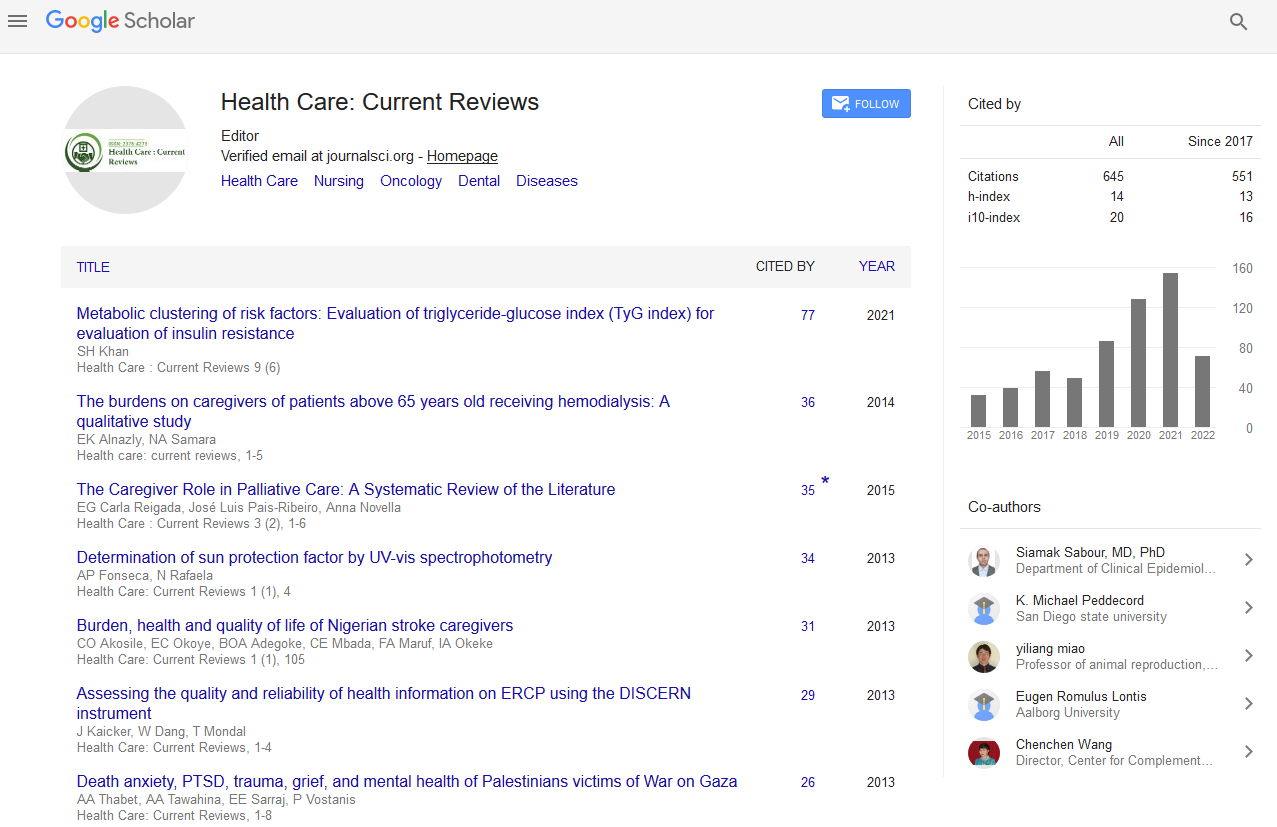PMC/PubMed Indexed Articles
Indexed In
- Open J Gate
- Academic Keys
- RefSeek
- Hamdard University
- EBSCO A-Z
- Publons
- Geneva Foundation for Medical Education and Research
- Google Scholar
Useful Links
Share This Page
Journal Flyer

Open Access Journals
- Agri and Aquaculture
- Biochemistry
- Bioinformatics & Systems Biology
- Business & Management
- Chemistry
- Clinical Sciences
- Engineering
- Food & Nutrition
- General Science
- Genetics & Molecular Biology
- Immunology & Microbiology
- Medical Sciences
- Neuroscience & Psychology
- Nursing & Health Care
- Pharmaceutical Sciences
Beauty and skin care in pathological aspects of skin aging
Euro Health Care and Fitness Summit
September 01-03, 2015 Valencia, Spain
M Fayez Al Homssi
University of Sharjah, UAE
Keynote: Health Care: Current Reviews
Abstract:
Telomeres are repeated sequences of DNA containing no genetic information. They cap and seal the ends of the chromosomes and protect them from damage. With time there is progressive shortening of the telomeres with each cell division. They could be the clock that determines loss of proliferative activity of the cell leading to apoptosis. Wrinkles, dilated pores, elangiectasias and hyper-pigmentation are some manifestations of skin aging. The percentage of collagen production in wrinkle is reduced by 70%, the contractile bundles of actinomyosin are formed, and composition of the dermis and the structure of macromolecules of the skin are modified. Extracellular matrix fills the spaces around the cells enforcing consistency adhesion and structure of tissues. The complex structure of extracellular matrix proteins ensures and regulates preservation of bio-mechanical and functional properties of epidermis (collagens, elastin and hyaluronic acid). Aging has three main components, intrinsic related to DNA and heredity, extrinsic through the effects of environment, nutrition and the lifestyle, and a third component related to emotions and psychology. The etiology of skin aging may include impaired production of collagen and elastin, thickening of stratum corneum, laxity, impaired tone, texture and elasticity, fat atrophy and loss of support. Aging and sun exposure may lead to hyper-pigmentations, telangiectasias, laxity, elastosis, wrinkles and enlarged pores. Solar UV radiation induces matrix metalloproteinases, resulting in impaired integrity of collagenous extracellular matrix, attacks keratinocytes and fibroblasts, resulting in activation of cell surface receptors, breakdown of collagen in extracellular matrix and shutdown of new collagen synthesis.
Biography :
M Fayez Al Homssi has completed his MD from Damascus University and Post-doctoral studies from University of Illinois School of Medicine. He is the Chairman of Neuroscience Unit, College of Medicine, University of Sharjah, United Arab Emirates. He has presented more than 90 conference papers, published five books and book chapters and more than 40 papers in reputed journals.
Email: mhomssi@sharjah.ac.ae


